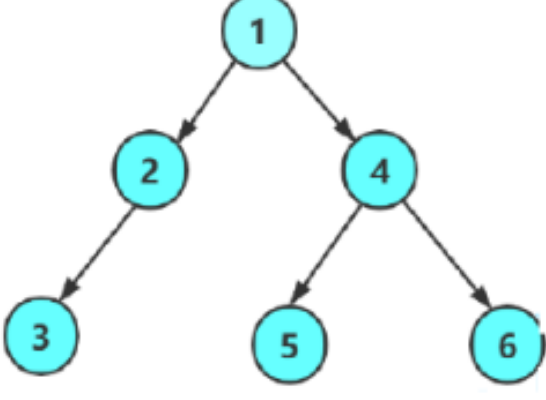C#森林中的兔子(力扣题目)
题目介绍
森林中有未知数量的兔子。提问其中若干只兔子 “还有多少只兔子与你(指被提问的兔子)颜色相同?” ,将答案收集到一个整数数组 answers 中,其中 answers[i] 是第 i 只兔子的回答。
给你数组 answers ,返回森林中兔子的最少数量。
示例 1:
输入:answers = [1,1,2]
输出:5
解释:
两只回答了 “1” 的兔子可能有相同的颜色,设为红色。
之后回答了 “2” 的兔子不会是红色,否则他们的回答会相互矛盾。
设回答了 “2” 的兔子为蓝色。
此外,森林中还应有另外 2 只蓝色兔子的回答没有包含在数组中。
因此森林中兔子的最少数量是 5 只:3 只回答的和 2 只没有回答的。
示例 2:
输入:answers = [10,10,10]
输出:11
提示:
1 <= answers.length <= 1000
0 <= answers[i] < 1000
解题思路
假设一只兔子的回答是x,那么说明和它颜色相同的兔子还有x只。那么总共有x+1只同色的兔子(包括自己)。例如,回答1的话,同色共有2只;回答0的话,只有自己。
但问题在于,不同的兔子可能有相同的颜色,或者不同的颜色。我们需要将这些回答分组,使得每个分组满足条件,同时总兔子数量最少。
那如何将这些回答进行分组呢?比如,如果有多个兔子回答同一个数值,如何确定它们是否属于同一颜色组?
比如,假设两个兔子都回答1。那么可能属于同一颜色组。因为该颜色组共有2只,所以这两个的回答都正确。这时候只需要计算2只。如果有第三个回答1的兔子,那么必须分成两个组。比如前两个是一组,第三个属于另一组,这时候另一组至少需要2只(因为第三只回答1,意味着还有一只没被询问到)。所以这时候总共有2 + 2 =4只。
所以,对于相同数值的回答,我们需要将它们分组,每组的大小是该数值加1。然后将这些组的总和相加,得到总的数量。
那具体来说,假设某个数值为x的出现次数是n次。那么每个这样的组最多可以包含x+1只兔子。如果有n个这样的回答,那么需要的组数是ceil(n/(x+1))。每个组贡献x+1只兔子。所以总共有ceil(n/(x+1)) * (x+1)只。
例如,对于示例1中的回答1出现两次。x=1,所以每个组最多允许2只。出现两次的话,刚好可以组成一个组,贡献2只。另一个回答是2,x=2,每个组需要3只。这里出现一次,所以只能组成一个组,贡献3只。所以总共有2+3=5只。
解决方式
使用字典统计回答次数
这种方式利用字典来统计每个回答出现的次数,然后根据每个回答计算所需的最少兔子数量。
using System;
using System.Collections.Generic;
public class Solution {
public int NumRabbits(int[] answers) {
Dictionary<int, int> countDict = new Dictionary<int, int>();
foreach (int ans in answers) {
if (countDict.ContainsKey(ans)) {
countDict[ans]++;
} else {
countDict[ans] = 1;
}
}
int total = 0;
foreach (var pair in countDict) {
int x = pair.Key;
int count = pair.Value;
int groupSize = x + 1;
int groups = (count + groupSize - 1) / groupSize;
total += groups * groupSize;
}
return total;
}
}
使用数组统计回答次数
由于题目中取值范围是0到999,我们可以使用固定大小的数组来统计每个回答的出现次数,这种方法在数据范围已知的情况下更为高效。
public class Solution {
public int NumRabbits(int[] answers) {
int[] counts = new int[1000];
foreach (int ans in answers) {
counts[ans]++;
}
int total = 0;
for (int x = 0; x < 1000; x++) {
int count = counts[x];
if (count == 0) continue;
int groupSize = x + 1;
int groups = (count + groupSize - 1) / groupSize;
total += groups * groupSize;
}
return total;
}
}
结合以上字典和数组
using System;
using System.Collections.Generic;
using System.Linq;
using System.Text;
using System.Threading.Tasks;
namespace 森林的兔子
{
internal class Program
{
static void Main(string[] args)
{
Solution counter = new Solution();
bool exit = false;
while (!exit)
{
Console.WriteLine("请输入兔子的回答(逗号分隔,例如 1,1,2),输入 'exit' 退出:");
string input = Console.ReadLine();
if (input.ToLower() == "exit")
{
exit = true;
continue;
}
try
{
// 解析输入为整数数组
int[] answers = ParseInput(input);
// 计算结果
int resultDict = counter.CalculateWithDictionary(answers);
int resultArray = counter.NumRabbits(answers);
// 输出
Console.WriteLine($"\n输入数据: [{string.Join(",", answers)}]");
Console.WriteLine($"字典方法结果: {resultDict}");
Console.WriteLine($"数组方法结果: {resultArray}");
Console.WriteLine($"结果是否一致: {resultDict == resultArray}\n");
}
catch (Exception ex)
{
Console.WriteLine($"错误: {ex.Message}\n");
}
}
}
// 将输入字符串解析为整数数组
static int[] ParseInput(string input)
{
if (string.IsNullOrWhiteSpace(input))
throw new ArgumentException("输入不能为空!");
string[] parts = input.Split(',');
int[] answers = new int[parts.Length];
for (int i = 0; i < parts.Length; i++)
{
if (!int.TryParse(parts[i].Trim(), out int num) || num < 0)
throw new ArgumentException($"无效输入: '{parts[i]}',请输入非负整数。");
answers[i] = num;
}
return answers;
}
}
public class Solution
{
public int NumRabbits(int[] answers)
{
int[] counts = new int[1000];
foreach (int ans in answers)
{
counts[ans]++;
}
int total = 0;
for (int x = 0; x < 1000; x++)
{
int count = counts[x];
if (count == 0) continue;
int groupSize = x + 1;
int groups = (count + groupSize - 1) / groupSize;
total += groups * groupSize;
}
return total;
}
public int CalculateWithDictionary(int[] answers)
{
Dictionary<int, int> countDict = new Dictionary<int, int>();
foreach (int ans in answers)
{
if (countDict.ContainsKey(ans))
{
countDict[ans]++;
}
else
{
countDict[ans] = 1;
}
}
int total = 0;
foreach (var pair in countDict)
{
int x = pair.Key;
int count = pair.Value;
int groupSize = x + 1;
int groups = (count + groupSize - 1) / groupSize; // 向上取整计算组数
total += groups * groupSize;
}
return total;
}
}
}
解题思路总结
- 统计回答次数:统计每个回答数值出现的次数。
- 计算每组数量:对于每个回答数值x,确定每组最多可容纳的兔子数量为x+1。然后根据该组容量将回答次数分成若干组,确保每组中的兔子数量不超过x+1。
- 累加总数:每组数量乘以组容量,累加得到所有颜色组的总数,即为森林中兔子的最少数量。



















